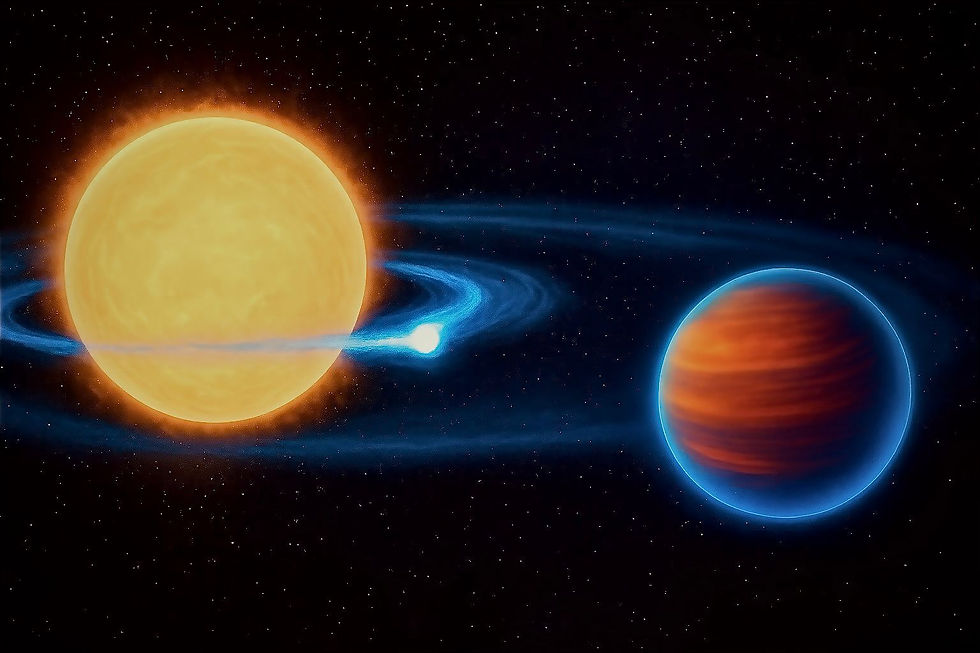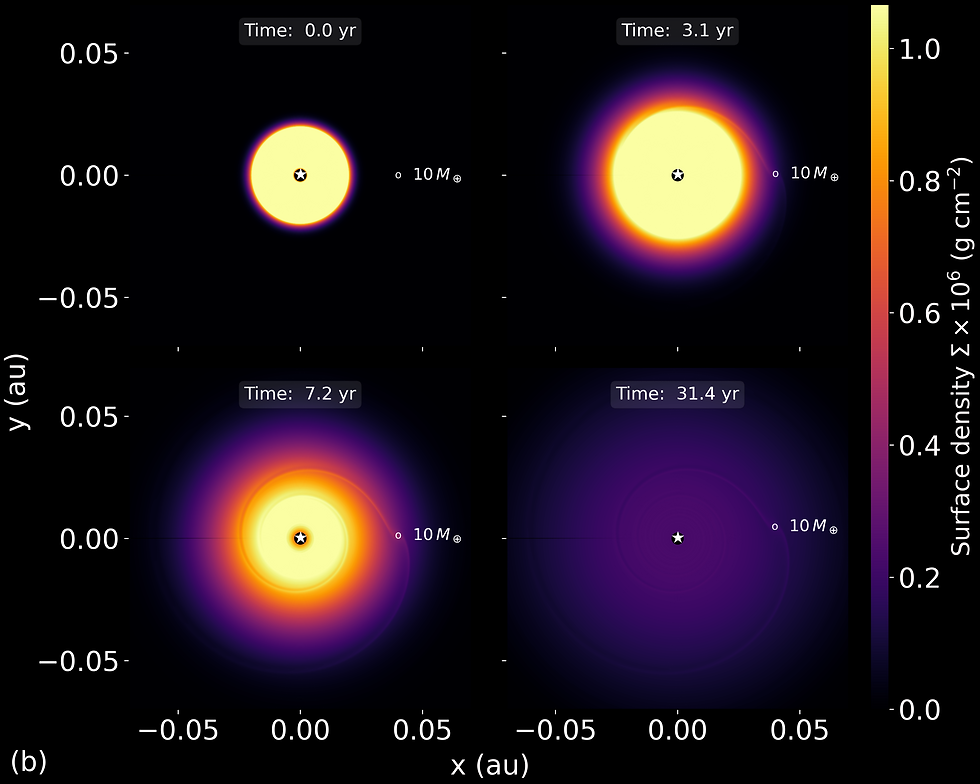The Other Planet Within Me
- Mario Sucerquia
- 1 ago
- 3 Min. de lectura

🗞️ Press Release
Can a planet carry within itself the story of another that no longer exists?
This research begins at the end. In the final moments of its life, a gas giant that ventured too close to its host star is destroyed by powerful tidal forces (read more in this recent article, lead by and also coauthored by Mario Sucerquia).
During this violent process, the planet is stripped of its hydrogen- and helium-rich atmosphere. Yet, instead of vanishing without a trace, part of that gas escapes into the outer system, where it lingers—adrift, seeking a new fate.
And that is where another story begins. According to a new study led by Mario Sucerquia (IPAG, CNRS – Université Grenoble-Alpes), some of this material can be gravitationally captured by smaller, more distant planets, wrapping them in a light, fleeting... and foreign atmosphere.
These worlds — referred to in the study as VEPs, or volatile-enriched planets — are not what they seem. Their atmospheres are not the product of their own evolution, but the legacy of another planet that no longer exists. A cosmic inheritance, imposed by tragedy, that transforms their chemistry, appearance, and even orbital identity.
To explore this scenario, the team used hydrodynamical simulations to model the disruption of a giant planet and the subsequent fate of the released gas. The results show that this material can migrate outward and be accreted by nearby low-mass planets, forming secondary atmospheres composed mostly of hydrogen and helium. The study also investigates how long these envelopes might survive under stellar radiation and analyzes the dynamical effects caused by the redistribution of mass within the system.

The simulation shows how, in just a few decades, the gas spreads throughout the inner stellar system and reaches the orbit of an outer planet with 10 Earth masses (10 M⊕), enabling the formation of a volatile-rich secondary atmosphere.
These newly acquired atmospheres could persist for millions of years and be detected through transit observations.
This inherited gas leaves behind clues: unusually inflated envelopes, helium-rich spectra, slightly eccentric orbits... Signals that are already being detected with telescopes such as JWST and Ariel.
In fact, systems like WASP-107b, HAT-P-11b, or TOI-421b could be modern-day bearers of such atmospheric memories. Small planets that, unknowingly, may be composed—at least in part—of the body of another world.
“This planet survived... but not unscathed. It carries in its atmosphere the story of another world—one that was devoured. This paper tries to identify those traces.”— says Mario Sucerquia, lead author of the study.
Beyond this particular finding, the research offers a new lens through which to interpret anomalous exoplanet compositions: they may not always reflect their own history, but perhaps that of another body—now absent—whose memory still floats around their star.
📍Credits:
This study was conducted by Mario Sucerquia (IPAG/CNRS, Université Grenoble Alpes), Matías Montesinos (UTFSM, Chile), Ana M. Agudelo (Universidad de Antioquia, Colombia), and Nicolás Cuello (IPAG/CNRS).The article was published on July 30, 2025, in the journal Astronomy & Astrophysics under the title:“Volatile enrichment in low-mass planets as signatures of past planetary disruption.”


Comentarios